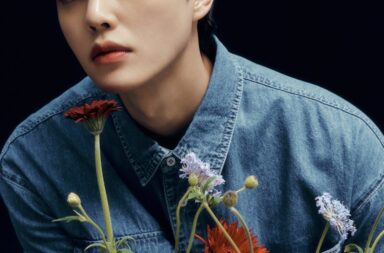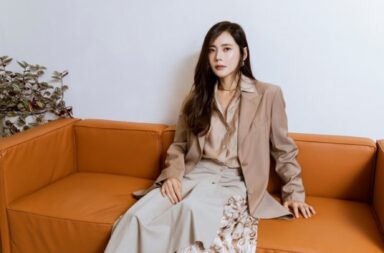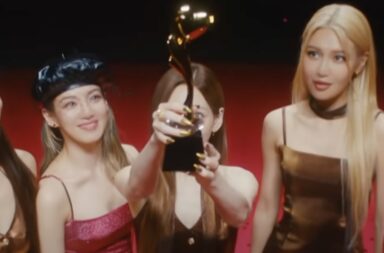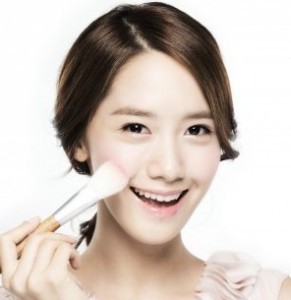 All societies are obsessed with beauty, and South Korea’s is no different. Every part of the body has a specific ideal to which the members of society are encouraged to aspire: double eyelids for eyes, v-lines for chins, s-lines for curves, choco-abs for, well, abs — the list goes on and is constantly being added to. But one of the oldest facets of beauty which is still highly regarded in modern day South Korea, and Asia, is fair skin.
All societies are obsessed with beauty, and South Korea’s is no different. Every part of the body has a specific ideal to which the members of society are encouraged to aspire: double eyelids for eyes, v-lines for chins, s-lines for curves, choco-abs for, well, abs — the list goes on and is constantly being added to. But one of the oldest facets of beauty which is still highly regarded in modern day South Korea, and Asia, is fair skin.
Beauty trends tend to be set by the rich and the famous, and this has been true throughout time. In the past, the lives and habits of the wealthy and upper-class members of society were watched and imitated by an often aspirational community; if one could not be wealthy and influential, then one could least give the appearance of being so. In the case of skin tone, members of high-class families could afford to not work and farm their own land, and as a result took on a paler complexion caused by a lack of exposure to the sun; by contrast, the poorer members of society would have a darker skin tone achieved from months spent outside working in the fields (usually owned by the aforementioned wealthy). As such, a fair complexion was looked upon more favourably in assessing beauteous worth, and was done so universally, in both the East and West. With the coming of the industrial revolution in the West, though, there was a reversal as the common worker spent more time indoors in factories and thus became paler and more susceptible to diseases like rickets due to vitamin D deficiency compounded by poor nutrition; this led to the pale look largely falling out of favour in Western society, where nowadays the “glowing, healthy” tan is more popular.
The industrial revolution took longer to reach the East, and as such, the beauty ideal of fair skin has been maintained for much longer; it was a pre-existing social more whose hold on society was further deepened with increased exposure to Western cultures. Seeing these seemingly more advanced communities consisting entirely of white people reinforced the belief of the superiority of fair skin – fair skin meant that one was smarter, richer, more upwardly mobile and more influential. And so, fair skin was, and remains to this day, very highly prized in South Korea, shaping people’s views and attitudes towards others, as well as spawning a thriving skin whitening industry.
At this juncture, it must be specified that a preference for lighter skin, despite being abetted by Caucasian culture, is not racism; it would in fact fall under the realm of colorism, which Trina Jones defined in “Shades of Brown: The Law of Skin Color” as the discrimination based on one’s skin colour. While there is overlap with racism, Jones explains that the main factor of colorism is its inclusion of discrimination between people of different skin colours who are members of the same race, as well as those of different races. As such, the Korean preference for whiter skin is more accurately described as colorism rather than racism, and terms such as “lighter” and “darker” have particularly Korean connotations – i.e., a dark Korean has a skin tone that would be described elsewhere as “tan,” but in the spectrum of Korean skin colours it is regarded as “dark.”
Like Korean society’s other beauty ideals, lighter skin tones pervade the media and pop culture. One place where we can see this manifested is, of course, K-pop – many an idol has been praised for their milky-white skin, like Super Junior’s Kyuhyun and miss A’s Suzy… but not all idols out there have porcelain skin.
Former Fin.K.L member and K-pop sex icon Lee Hyori is seen as a pioneer for the representation of dark skin (by Korean standards) in Korean pop culture. Her success could be one of the reasons why Koreans have warmed to darker skin tones, and in turn increase the number of darker-skinned idols among Hyori’s contemporaries. But, for all the progress that may have been made in diversifying the “beautiful” shades of skin colour, the lighter side of the spectrum is still widely favoured. As a post-industrial nation, there is a chance that South Korea could follow in the footsteps of its Western counterparts and develop a preference for a tanned, sun-kissed glow, and naturally dark-skinned people (both idols and members of the public) may become more recognised as fitting a beauty ideal. But, until then, these darker idols need to capture the audience’s attention – an audience which, in such an appearance-based culture, may well dismiss them on first glance for not being white enough. So what solution do companies have in mind?
 In a word: sex. Take Hyori, for example; most Koreans and K-pop fans regard her as the epitome of sex. When a company puts forth a new young starlet with a provocative image (hi Cube Entertainment), fans are quick to tell everyone to step aside and let Hyori show them how it’s done. And Hyori’s not alone: “Black Pearl” Yuri is the sexy Soshi, with fellow dark-skinned SNSD member Sooyoung not far behind; Yubin of the Wonder Girls is the spice to the sugar and all-things-nice of her fellow members; Sistar’s Hyorin and Bora have darker complexions and spearhead a group renowned for its sexy image; and EXO-K’s Kai even recounted in an interview how SM designated him the “member in charge of sexiness,” despite his initial protests. “Sexy” becomes their label, the concept that allows them to carve a niche in the idol market and their group’s fandom, thus gaining popularity, and more profit for companies.
In a word: sex. Take Hyori, for example; most Koreans and K-pop fans regard her as the epitome of sex. When a company puts forth a new young starlet with a provocative image (hi Cube Entertainment), fans are quick to tell everyone to step aside and let Hyori show them how it’s done. And Hyori’s not alone: “Black Pearl” Yuri is the sexy Soshi, with fellow dark-skinned SNSD member Sooyoung not far behind; Yubin of the Wonder Girls is the spice to the sugar and all-things-nice of her fellow members; Sistar’s Hyorin and Bora have darker complexions and spearhead a group renowned for its sexy image; and EXO-K’s Kai even recounted in an interview how SM designated him the “member in charge of sexiness,” despite his initial protests. “Sexy” becomes their label, the concept that allows them to carve a niche in the idol market and their group’s fandom, thus gaining popularity, and more profit for companies.
Though, like in the case of Kai, companies have actively labelled members as “sexy,” this may be the result of not only calculating executives, but also of long-lasting social attitudes and views towards darker skin. Pale skin is associated with purity, fragility and familiarity, while darker tones are considered to be more foreign, and thus more exotic. There are many other negative connotations as well (untrustworthiness, primitiveness, etc.) but any company wanting to ensure a positive reception to their idols would prefer to focus on the exotic nature of dark skin, and by extension, their sexuality. This approach could, and does, result in a veneer of assumed promiscuity coating an idol’s image, but in the grand scheme of things this is less damaging than being regarded as uncivilised or shifty; after all, Sistar is often derided for their apparently “trashy” image, but yet they still manage to make sales, top charts and win music show awards, and Rain‘s abs seem to have a career of their own. In short, sex sells, and and companies and idols can wield it as a defence against the social disadvantages of having darker skin.
 But South Korea is a conservative society after all, and sex will only get one so far. During “No Other” promotions, Super Junior’s Heechul tweeted a picture with Yuri, and said in the accompanying tweet:
But South Korea is a conservative society after all, and sex will only get one so far. During “No Other” promotions, Super Junior’s Heechul tweeted a picture with Yuri, and said in the accompanying tweet:
Yuri shows off 99.9% of cocoa on stage, and she shows off the clean features like that of milk chocolate on variety shows.
The implication here is that while being dark, sexy and fierce may win them fans on stage, off-stage, idols, especially females, may need to adhere to an unspoken requirement of appearing more demure as shown through having lighter skin, be it for an interview, a more innocent album concept, or even an endorsement deal: despite being acknowledged as one of the more prominently dark-skinned idols, Yuri was still chosen to appear in a CF for Dior Snow UV BB Cream:
[youtube http://www.youtube.com/watch?v=kDNLlE91AEc]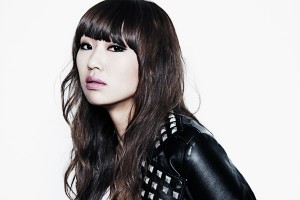 Unlike race, the colour of a person’s skin can change thanks to lighting, make-up, photoshop and tanning. Though the last practice is not widely popular in Korea, there have been famous instances of its use, the most well-known being Hyuna‘s spray tan during “Bubble Pop” promotions, which was said to reflect the summery (and some would say sultry) feel of the song; and Siwon also seems to more tan during live performances of “Sexy, Free and Single.” However, the reverse is more popular, as exemplified by the CF above–this is only to be expected when one look is favoured over another.
Unlike race, the colour of a person’s skin can change thanks to lighting, make-up, photoshop and tanning. Though the last practice is not widely popular in Korea, there have been famous instances of its use, the most well-known being Hyuna‘s spray tan during “Bubble Pop” promotions, which was said to reflect the summery (and some would say sultry) feel of the song; and Siwon also seems to more tan during live performances of “Sexy, Free and Single.” However, the reverse is more popular, as exemplified by the CF above–this is only to be expected when one look is favoured over another.
There are exceptions, of course: fair-skinned Krystal, for example, is seen as the sexier member of f(x) over Luna; Ga-in gives Narsha a run for her money in the sensuality stakes; and Bom is recognised as being the official “sexy member” of 2NE1 though Minzy‘s dancing is acknowledged too. But, again, these are exceptions, and darker-toned idols are the ones more likely to be slotted into the sexy archetype as the best way to overcome the apparent disadvantage of not having fair skin in the quest for fame. Attitudes may be slowly changing — if pop culture is a reflection of society as a whole, then a greater number of darker idols may be a sign of a move in a more diverse and accepting direction; but for now, the fact remains that light skin is the ideal.
(Dior, Heechul’s twitter, Tony Moly, Trina Jones, Shades of Brown: Shades of Skin Colour (Duke Law Journal, 49 (6), 2000), Starship Entertainment, University of Oslo, Vogue Girl)

